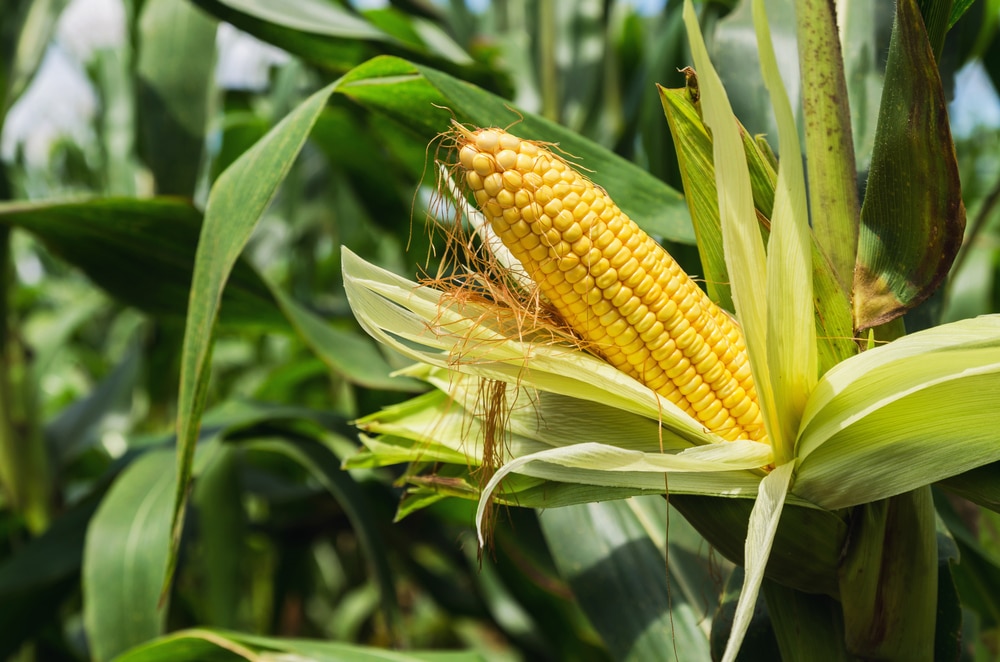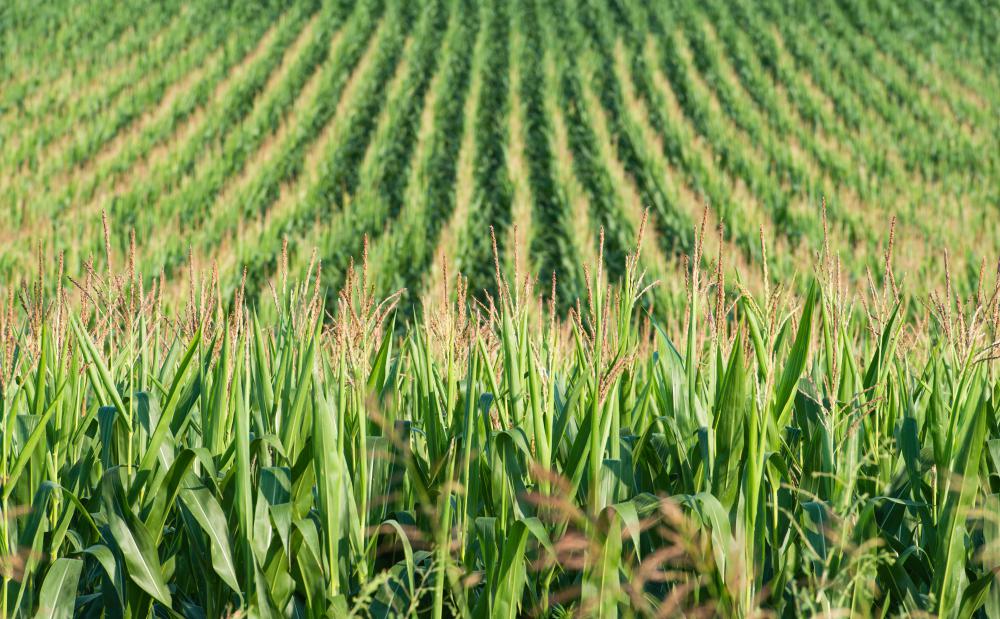Corn is a staple food crop grown across the world.
But is corn production sustainable or does it come at a high environmental cost?
This article examines the impacts of corn farming on the climate, water usage, ecosystems, and more.
Is Corn Bad for the Environment?
Yes, corn production as it exists today is generally bad for the environment.
The high usage of nitrogen fertilizers, methane emissions from corn fields, monocropping practices, and pollution from corn-fed animal farming all contribute significantly to issues like climate change, biodiversity loss, dead zones, and plastic waste accumulation when corn is produced on a massive industrial scale.
However, carefully managed corn production utilizing regenerative practices can potentially be integrated into sustainable food systems.
Overall, the current environmental impacts of conventional corn production highlight the need for urgent reform.
Key Points
- Corn production accounts for 12% of global crop-related methane emissions that drive climate change.
- Heavy use of nitrogen fertilizers leads to water contamination and dead zones where aquatic life cannot survive.
- Monocropping corn year after year degrades soil health and causes biodiversity loss above and below ground.
- Corn-fed industrial animal production generates huge amounts of water pollution and manure runoff.
How Does Corn Farming Impact Greenhouse Gas Emissions and Climate Change?
Corn production is a major contributor to greenhouse gas emissions that fuel climate change.
This is due to heavy fertilizer use and the fact that rice paddies and corn fields are ideal environments for methane-producing bacteria.
Since methane is 25 times more potent than CO2 as a heat-trapping gas, corn’s climate impact is significant.
Corn has the highest climate impact per calorie of any food crop.
The high demand for nitrogen fertilizers in corn production further exacerbates the emissions.
More than half of all the nitrogen fertilizer used in the U.S. is applied to corn alone.
These fertilizers break down into nitrous oxide, an extremely damaging greenhouse gas.
How Does Corn Farming Affect Water Usage and Quality?
Corn is a very thirsty crop, requiring significant amounts of water.
An ear of corn requires around 180 gallons of water to grow to maturity.
Additionally, corn production heavily contributes to water pollution in many watersheds.
As fertilizer and manure run off of cornfields, they introduce unhealthy amounts of nitrogen into rivers, lakes, and oceans.
This results in hypoxic or “dead zones” where oxygen levels are too low for most aquatic life.
The Gulf of Mexico dead zone is largely a result of nitrate runoff into the Mississippi River from Midwestern corn and soybean farms.
This has decimated shrimp and fish populations in the area.
What Are the Effects of Corn Monocropping on Biodiversity and Soil Health?
Growing continuous corn year after year on the same land is problematic for both ecosystems and soil quality.
Corn monocropping leads to a loss of biodiversity above and below ground.
It also results in a rapid depletion of soil organic matter and soil degradation.
Monocropping corn diminishes the complex soil food web needed to maintain healthy soils.
It also increases soil erosion and vulnerability to pests, prompting increased pesticide use.
Pesticides then further damage soil life along with above-ground biodiversity.
Crop rotations including wheat, soybeans, hay, and forage crops are needed to replenish the soil and break up pest cycles.
Integrating cover crops into corn production is another solution to improve soil health.
How Does Corn-Fed Animal Farming Impact the Environment?
Industrial animal production depends heavily on corn feed, which contributes significantly to water pollution from manure “lagoons”.
Raising corn to feed livestock also shifts land away from ecosystems and uses a tremendous amount of water.
However, well-managed pasture-based livestock systems integrated with corn crops can regenerate soils and provide symbiotic benefits.
The key is balance.
But the current scale of corn production to support CAFOs (concentrated animal feeding operations) is extremely taxing on the environment.
How Does Corn Packaging Contribute to Plastic Pollution?
Most of the corn consumed in the U.S. comes in plastic packaging, contributing to the plastic pollution crisis.
For example, microwave popcorn bags are coated with dangerous perfluorinated chemicals (PFCs) linked to health issues.
Corn also gets turned into single-use plastics and ethanol fuel made from corn results in more smog.
Corn production for biofuels and bioplastics essentially subsidizes petroleum through monoculture systems dependent on natural gas-derived fertilizers.
Is Corn a Sustainable and Renewable Crop?
Corn production as it exists today is far from sustainable.
However, integrated corn production utilizing cover crops, crop rotations, perennial polycultures, and organic practices can regenerate soils and provide lasting yields.
The bottom line is that current industrial corn monocropping causes very real harm.
But corn itself is not “bad”.
With proper stewardship and ecological farming practices, corn can be an integral part of sustainable food systems.
But fundamental changes are urgently needed in how the majority of corn acres are managed to lessen the environmental impacts.
Why Is Corn Unsustainable?
Corn production as it exists today relies heavily on practices that damage the environment and human health.
Industrial corn farming involves heavy use of synthetic fertilizers and pesticides that pollute waterways and degrade soils.
The fertilizers used on corn also require significant fossil fuel inputs to manufacture.
Additionally, continuously growing corn year after year without crop rotations leads to a loss of biodiversity above and below ground.
It diminishes the complex soil food web and degrades the soil structure.
Monocropping corn greatly increases risks of soil erosion, nutrient depletion, and pest infestations.
Furthermore, corn’s high-water demands are problematic in regions facing water scarcity.
And modern corn hybrids lack the resiliency of more diverse traditional varieties adapted to local conditions.
Relying on just a few specialized corn varieties makes food systems more vulnerable.
Overall, large-scale corn production today consumes unsustainable amounts of resources, pollutes the environment, disrupts ecosystems, and makes farmers increasingly reliant on chemicals and GMO seeds controlled by corporations.
It is an extractive model that degrades nature for short-term yields.
Why Is Corn Good for the Environment?
When grown regeneratively in appropriate contexts, corn can be integrated into diverse cropping systems in ways that benefit the environment.
Strategically planted corn can help control erosion, especially on sloped fields.
As a fast-growing annual crop, corn planted after perennials can quickly protect and rebuild degraded soils.
Intercropping or relay cropping corn with nitrogen-fixing cover crops, forage crops, and legumes enhances soil fertility and reduces the need for external fertilizer inputs.
Integrating livestock grazing on cover crops into a corn rotation also recycles nutrients.
Permaculture “food forests” demonstrate that corn works well combined with fruit trees, vines, vegetables, and herbs in polycultures.
Heritage corn varieties that open-pollinated for centuries have stronger root systems and greater genetic diversity.
These resilient heirloom corns grown organically enrich soils when rotated with other crops.
Overall, corn is not inherently bad, but vital reforms are needed in how the majority of corn is currently grown.
How Does Corn Affect the Climate?
The primary ways corn production negatively affects the climate are through nitrous oxide emissions from nitrogen fertilizers, methane emissions from flooded fields, and pollution from petroleum-based farm chemicals.
Growing corn with heavy use of synthetic nitrogen fertilizers releases potent nitrous oxide, which is 300 times more potent than carbon dioxide as a greenhouse gas.
Modern corn varieties also facilitate much higher yields but have lost natural genetic diversity that could make them more drought resistant.
Additionally, continuously flooding corn fields creates the perfect anaerobic conditions for methane-producing bacteria.
With rice paddies, corn accounts for 12% of global crop-related methane emissions that are accelerating climate change.
Is Corn Sustainable to Grow?
Industrial monoculture corn production as predominantly practiced today is highly unsustainable.
But corn can be grown responsibly as part of diversified cropping systems utilizing practices like extended crop rotations, intercropping, organic soil amendments, and agroforestry.
The key is integrating corn strategically into cropland in ways that regenerate soils and provide multiple ecosystem services.
When combined with other crops, livestock, and perennials in agroecological systems, corn can play an important role in resilient regional food systems.
But fundamental reforms of modern corn production practices are urgently needed.
In Conclusion
The key takeaways on corn production are that it significantly contributes to climate change, water pollution, dead zones, soil degradation, and plastic waste when grown on a massive scale.
But innovative farmers are pioneering new ways to grow corn sustainably while benefiting the environment.
Humanity needs to find a balance when meeting the demand for corn in our systems.
With care and creativity, corn can be grown responsibly.
But the status quo of corn production is detrimental and requires systemic changes to become ecologically sound.
There are reasons for hope, but the environmental impacts make reform essential.
Frequently Asked Questions
How Does Corn Farming Increase Greenhouse Gas Emissions?
Corn production emits high levels of methane, a very potent greenhouse gas that is 25 times more heat-trapping than carbon dioxide. Flooded rice paddies and corn fields create the perfect anaerobic environment for methane-producing bacteria. Corn’s climate impact per calorie is the highest of any food crop.
What Is Corn Used For?
The majority of corn grown in the U.S. is used as livestock feed in industrial farming operations (CAFOs). Corn is also processed into ethanol fuel, high fructose corn syrup, bioplastics, packaging materials, and much more. Only a small fraction of corn is used directly for human consumption.
What Are Solutions to Making Corn Farming More Sustainable?
Practices like cover cropping, no-till farming, crop rotations, integrating perennials, managed grazing, and eliminating synthetic fertilizers and pesticides can greatly reduce the ecological harm from corn production. But systemic shifts away from monocropping and CAFOs are also critically needed.
How Does Corn Farming Lead to Soil Degradation?
Continuous corn monocropping rapidly depletes soil organic matter, nutrients, and soil life. This increases dependence on chemical fertilizers and pesticides while diminishing the soil’s natural resilience. Integrating small grains, hay crops, and managed grazing into rotations can regenerate corn farm soils.
At GreenChiCafe, we are passionate about the natural world and promoting sustainable solutions. Visit our website to learn more about environmentally conscious living.

Annie is a passionate environmental writer and activist. She has been writing about sustainability, conservation, and green living for over 15+ years. Annie is dedicated to raising awareness about environmental issues and providing practical tips for living an eco-friendly lifestyle. When she’s not writing, you can find her volunteering with local environmental organizations, teaching workshops on zero waste living, or exploring nature. Feel free to get in touch with Annie: annie@greenchicafe.com


